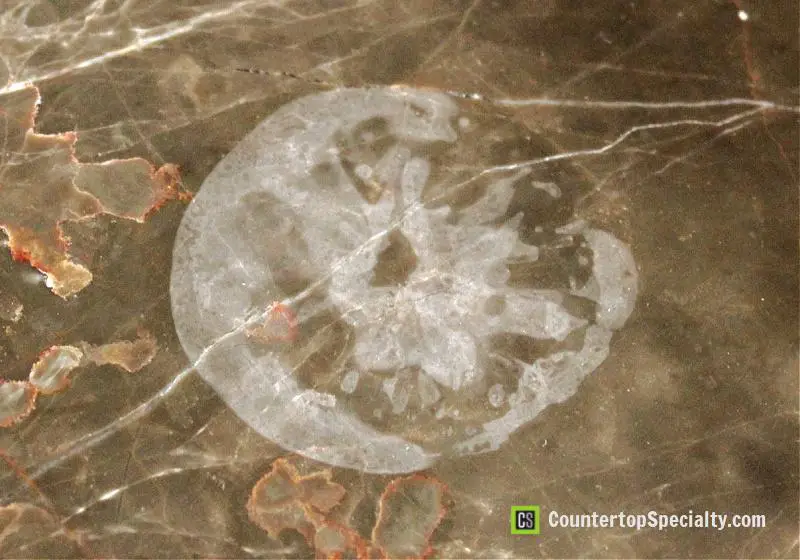How To Repair Etched Marble

QUESTION:
How do you repair marble once it has been etched or looks like a dull water mark on the marble?ANSWER:
Etched marble is repaired by repolishing or refinishing the damaged surface. How it's done depends on the type of finish and the severity of the etching.Marble etching occurs upon contact with acidic foods and drinks and from the use of the wrong type of cleaner.
So, citrus fruits (as in the above photo) and drinks like juice, coffee, soda, wine, alcohol, and many other foods will etch marble.
Pro tip: Etching is also caused by harsh products like bleach, vinegar, and ammonia. Most generic and common brand-name cleaners are too caustic for cleaning marble and will etch the finish.
That's why you should only use product safe for cleaning marble.
Etching is a corrosive chemical reaction that essentially eats at the marble. Think of it like a burn that removes the finished top layer of marble.
It's very noticeable on a polished surface because it exposes dull raw marble.
Of course, it happens just the same on a honed surface but is not as visible since honed marble has a matte finish that is duller to begin with.
Solutions to Repair Etched Marble
Luckily, marble repair for etching is simple, but again... the method depends on the finish type and the etching severity.
On Polished Marble
Restore dull spot etching on polished marble finishes using the Marble Polish / Etch Remover, which is engineered specifically for marble repair and will restore the shine and color to a like-new condition.
Easy-to-use DIY product... just rub on using a bit of pressure with a soft cloth.
Depending on the stone and the degree of etching, you may have to make several applications.
It's kinda like sanding wood. You need to keep sanding it until it is as smooth as you want it. Same here... keep at
Again, the above product is for use on shiny polished marble only.
On Honed Marble
Restoring etch marks on honed marble is different than on polished marble.
Use these DIY Marble Polishing Pads (drill kit or manual pads).
These polishing pads are able to achieve a matte or honed finish that blends with the surrounding area.
Or you can follow the simple step-by-step instructions provided in the Removing Etch Marks e-book.
But the above products make the repair easier and quicker.
Severe Etch Marks
Severe etching is rare but can occur if an acidic substance is left to sit on the marble countertop or tile for an extended period. It will continue to eat away the marble.
If the damaged area is noticeably rough to the touch, then it is severe.
The above methods may work in some cases, but usually, a stone restoration professional is needed to repair severe etch marks.
Different methods for finishing and polishing marble are needed depending on the condition and level of finish of the marble.
Severe etching requires more vigorous and specialized treatment. It's pretty rare, so most often, the DIY methods will do the trick quickly and easily on 95% of etch marks, even if you have to apply it a few times.
When etching is severe and rough, you can try the DIY methods, but will likely need a pro.
Preventing Etching on Marble
To dispel a common misconception, applying a marble sealer does NOT prevent etching.
Sealers prevent stains but cannot stop physical damage to the stone. Etch marks are physical damage.
Preventing contact with damaging substances and cleaners is the only totally successful method.
Some coatings can help prevent etching but not completely. And such coatings have drawbacks to consider.
The best advice is to practice good marble cleaning habits, use coasters, trivets, cutting boards, and learn to restore etch marks as part of normal marble maintenance.
Comments for How To Repair Etched Marble
|
||
|
||
|
||
|
||


